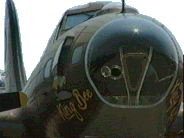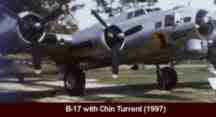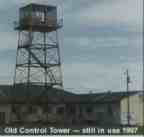Sebring, FL
Hendricks Field
Army Air Force Basic Training School, Sebring, FL(1941-1946)

In an area chosen for it's great flying weather, Hendricks Field trained hundreds of flight crews for the B-17. The Tower, Hangar and operations Building as they appeared in 1996 are also shown below.
Photos
 |
B-17g 1996 |
 |
Hangar 1996 |
 |
Operations Bldg (now a cafe) 1996 |
 |
Control Tower Still in use (1996) |
History
B-17
NUMBER BUILT: A total of 12,731 Flying Fortresses were produced in the period 1935-1945. Of this total, Boeing built 6981, Douglas Aircraft built 3000 and Vega (Lockheed) built 2,750. The break down of models is as follows. 1 Boeing model 299, 13 Y1B-17s, 1 Y1B-17A, 3 9 B-17Bs, 38 B-17Cs, 42 B-17Ds, 512 B-17Es, 3,405 B-17Fs (2,300 Boeing, 605 Douglas and 500 Vega), 6,430 B-17Gs (4,035 Boeing, 2395 Douglas and 2250 Vega). 730 B-17Gs were canceled at the end of the war (600 Douglas and 130 Vega). Approximately 4,750 B-17s were lost on combat missions.
NUMBER ASSIGNED TO SAC: At least
20 RB-17Gs were assigned to SAC. These aircraft were assigned to Offutt
AFB, NE; Barksdale AFB, LA; March AFB, CA; and Fairfield-Susuin AFB, CA.
They were transferred to the U.S. Navy starting in Dec 1949 -Jul 1950.
SAC also flew F-9s and FB-17s . To serve as long-range photographic reconnaissance
aircraft, a number of B-17s were converted to F-9s between 1942 and 1944.
The first F-9s were B-17Fs with tri-metragon cameras in the nose, and
other cameras in the bomb-bay and rear fuselage. Different camera arrangements
distinguished the 25 F-9As and F-9B, while the 10 F-9C were conversion
of the B-17G. Those that remained post-war were eventually re-designated
RB-17G. Some other camera-equipped Fortresses also operated as FB-17s.
For more on the history of Sebring, see:
Sebring
Regional Airport History
Allen Altvater Online Library
![]()
Send Corrections, additions, and input to:
|
Visitors since
June 6, 2000 |